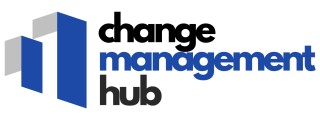-large-teaser.webp)
Understanding the People Aspect
Focusing on the Human Element
In the realm of change management, understanding the people aspect is crucial. Organizations often overlook the human side of change, focusing instead on processes and technology. However, employees are the backbone of any successful transformation. Their engagement and adaptability can significantly influence the outcome of change initiatives.
Building a Supportive Culture
Creating a supportive organizational culture is essential for effective change management. This involves fostering an environment where employees feel valued and heard. Encouraging open communication and feedback can help in addressing concerns and building trust. A well-defined strategy that includes training and development programs can empower employees to embrace change.
Enhancing Communication and Collaboration
Effective communication is a cornerstone of successful change management. It ensures that everyone is on the same page and understands the vision and objectives of the change. Utilizing digital tools and platforms can facilitate better communication and collaboration among teams. This not only helps in aligning the organization but also in streamlining processes for change.
Empowering Leadership and Decision Making
Leadership plays a pivotal role in guiding an organization through change. Leaders must be equipped with the right skills to manage change effectively. This includes decision making, conflict resolution, and the ability to inspire and motivate teams. By leveraging the congruence model in change management, organizations can align their people, processes, and technology to achieve desired outcomes.
Understanding the people aspect is just one part of the broader framework. As we explore further, we'll see how streamlining processes and leveraging technology can complement the human element, leading to a holistic approach to change management.
Streamlining Processes for Change
Refining the Core Processes
A successful change management initiative hinges on the optimization of processes within the organization. Streamlining processes involves identifying inefficiencies and enacting strategic improvements, allowing an organization to adapt swiftly to change. In modern business environments, processes must be agile to accommodate evolving technological advancements and customer expectations. This agility is part of a larger framework that unifies the three elements of people, process, and technology. Streamlining involves looking at all three components holistically to ensure that they work in harmony. Consider the following key strategies to streamline processes for effective change:- Data-Driven Decision Making: Use data and analytics to understand organizational workflows and pinpoint areas for improvement. By focusing on data-driven insights, businesses can make informed decisions to optimize processes.
- Automating Routine Tasks: Introducing automation tools can free up employees to focus on more complex tasks that require human intervention. This not only boosts efficiency but also enhances employee satisfaction.
- Standardization and Documentation: Clearly documented processes ensure consistency and help maintain quality control across the organization. Reliable documents act as a knowledge management repository for all team members.
- Continuous Improvement Culture: Instill a culture of continuous improvement where employees are encouraged to provide feedback and suggest process enhancements.
Leveraging Technology for Effective Change
Harnessing Digital Tools for Seamless Change
In today's digital age, the role of technology in change management cannot be overstated. As organizations navigate the complexities of transformation, investing in the right digital tools can be a game-changer. The integration of technology within the change management framework acts as a catalyst for enhanced decision making. By leveraging a technology framework, organizations can effectively gather, analyze, and utilize data, transforming it into actionable insights. Here's how organizations can make the most of technology in the change process:- Data Analysis and Insight Generation: Utilizing advanced data-driven tools is paramount for effective change management. Such tools enable businesses to extract meaningful insights from vast datasets, supporting informed decision making and predictive analysis.
- Enhancing Communication: Technology facilitates streamlined communication among team members and departments, ensuring that everyone involved is aligned with the organizational goals and change objectives. This prevents miscommunication, which is often a hurdle in seamless change adoption.
- Project Management Solutions: Digital project management tools keep track of tasks, deadlines, and responsibilities. These tools create a centralized platform for collaboration, making it easier for people to stay on the same page, thus aligning with the process technology aspect of change management.
- Customer Engagement: With the increasing significance of a customer-centric approach, technology helps cater to customer needs and feedback in real-time. Implementing customer relationship management (CRM) systems allows businesses to personalize their services and products, ensuring a smoother transition during change initiatives.
- Training and Development: Digital platforms offer vast opportunities for training and development, helping employees to acquire new skills and adapt to organizational changes. Online courses, webinars, and e-learning resources are some of the tools that can be harnessed in training employees effectively.
Integrating the Framework for Holistic Change
Bringing Together Core Components
Integrating the People, Process, and Technology (PPT) framework requires organizations to cohesively manage its three components, creating a seamless environment for change. This integration ensures that change management is not fragmented but addresses the holistic picture.Aligning Business Objectives
An organization that effectively aligns its people with its strategic business objectives can foster a culture that embraces change. By understanding what drives employees and leveraging robust knowledge management strategies, organizations can ensure that team members are prepared for the transition. Effective training programs focused on skills enhancement should be an integral part of this alignment.Streamlining Processes
Streamlining organizational processes is crucial when implementing the framework. Best practices in decision making and process technology can help refine operations, reducing inefficiencies and paving the way for smoother transitions. Utilizing data-driven insights ensures that changes are well defined and support long-term organizational goals.Leveraging Tools and Technology
Using the right tools and technology framework is essential for a successful change initiative. Digital transformation is more than just a buzzword; it's about employing technology that supports the change management process, enhancing both the customer experience and internal operations.Fostering Collaboration and Communication
The integration of the PPT framework calls for effective communication channels. It's imperative that the organizational team is well-informed and involved in the change processes. By prioritizing employee engagement and fostering open dialogue, organizations can mitigate resistance and promote a smooth change journey. Bringing all these elements together requires a strategic approach to combining people, process, and technology. It’s a dynamic process that demands ongoing evaluation and adjustment to meet evolving business needs.Case Studies: Successful Change Management
Illustrative Success Stories of Change Management
In the realm of change management, organizations have seen significant transformations by adopting a well-rounded framework that intertwines the key components: people, process, and technology. Here are some illustrative case studies that highlight the power and efficacy of using this comprehensive approach:- Global Manufacturing Company: A global leader in manufacturing embarked on a digital transformation journey aimed at optimizing their supply chain processes. By concentrating on the people aspect, they provided extensive training to employees, ensuring a smooth transition to new digital tools. Simultaneously, they streamlined their supply chain processes to enhance efficiency. The integration of cutting-edge technology, such as real-time data analytics, empowered management with insights for effective decision making. As a result, the organization experienced increased productivity and reduced operational costs.
- Financial Services Firm: This company faced rapid shifts in customer expectations and regulatory changes. By leveraging a structured change management framework, they focused on enhancing their team collaboration. They introduced a comprehensive training program tailored for their employees to handle modern technology tools and processes effectively. Moreover, digitizing their customer interaction processes not only improved customer satisfaction but also boosted business agility. The strategic alignment between the three components facilitated a seamless adaptation to the evolving business landscape.
- Retail Chain: In an effort to improve their customer engagement and streamline their operations, a large retail chain adopted a holistic change approach. The organization employed the best practices in change management by engaging their employees in the change process, thus fostering a culture of inclusivity and innovation. They revamped their internal processes and integrated a technology framework that enabled data-driven insights for optimizing inventory and enhancing customer experience. This resulted in improved sales performance and stronger brand loyalty.
Challenges and Solutions in Implementing the Framework
Navigating Implementation Hurdles
Change management within organizations often presents a unique set of challenges as they attempt to implement the three-pronged framework of people, processes, and technology. Understanding these common roadblocks can help pave the way toward effective solutions.Addressing Resistance to Change
One of the primary hurdles in organizational change is resistance from employees. As the organization evolves, employees may feel uncertain about their roles or fear the unknown that comes with technological integration and altered processes. Open communication, along with comprehensive training programs, can ease these fears, ensuring that the people aspect of the framework is adequately addressed. Regularly engaging employees, by incorporating their feedback into the change strategy, aids in decision making that aligns with the organizational culture.Ensuring Process Alignment and Flexibility
Streamlining processes for change is another pivotal element, but it requires a careful balance. Organizations must navigate the complexity of business processes and ensure they remain adaptable to changing conditions. Without well-defined processes that incorporate clear workflows and adaptable mechanisms, organizations risk falling short during transitions. Utilizing data driven insights to fine-tune processes can result in smoother transitions.Leveraging Technology Judiciously
Integrating technology is integral, yet another challenge is ensuring that it's not misaligned with business objectives. The technology part of the framework necessitates choosing the right digital tools that correspond with the overall change strategy. It's vital for organizations to recognize that while technology can be a facilitator, it should not dictate the change, but rather support it. Employing the appropriate technology framework is essential for ensuring that both objectives and practical implementations are met.Key Solutions for Overcoming Challenges
- Enhance Communication: Transparent and continuous interaction fosters trust among employees, reducing resistance.
- Promote Training and Development: Ongoing skill development ensures that employees are equipped to handle new processes and technology.
- Implement a Flexible Technology Strategy: Choose technologies that can adapt as the organization grows, avoiding rigid solutions.
- Incorporate Data for Decision-Making: Utilize data analysis for feedback and to monitor the effectiveness of change initiatives.












